Kilian Jornet has ended his speed attempt on Everest from Tibet citing “dangerous” conditions. Meanwhile the only other climber from that side, Japanese Nobukazu Kuriki, remains at base camp also noting that Everest is covered with deep snow this autumn. He remains optimistic that he can still make an attempt.
The monsoon seems to be hanging on a bit longer this year bringing snow to Everest but rain to the other base camps. Teams on the other peaks are making good progress with acclimatization rotations to the higher camps. But before I get to those, a couple of new efforts have been reported since my last update.
Speed and First Ascents
First
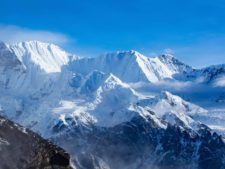
While not Everest, which “would be a bit of a walk in the park” according to Canadian Elia Saikaly; he and Pasang Kaji Sherpa are attempting a first ascent on two recently opened points along the ridge between Cho Oyu and Gyachung Kang. They were previously called Ngozumba I and III but renamed Tenzing Peak (7,916 m) and Hillary Peak (7,681 m) and opened for climbing.
Nepal has been opening new peaks, 104 in 2014, for legal climbing over the past few years to promote tourism and perhaps shift climbers away from Everest due to overcrowding. Today there are 414 peaks available for climbing permits
However there is some controvesery about some of the newly opened peaks Nepal. Climber Damien Gildea noted:
… it’s not about altitude, it’s about Prominence, which is often considered a measure of how significant a peak is, and correspondingly how worthwhile a climbing challenge it is. Tenzing has just 170m of Prominence, or 2.14% of its height. Hillary, at 124m, or 1.6%, is even less significant. A general rule for the Himalaya & Karakoram is that 6-8% is needed for a peak to be classified as a mountain. In toponymic and geographic terms, these government inventions fall well short.
Saikaly counters:
For us: it’s not about how high. We’ve been to the top of Everest. Myself twice, PK, 4 times. It’s not about the altitude, it’s not about the difficulty, it’s about the depth of the idea and the meaning of the project. It’s about the symbolism. In no way whatsoever do we put ourselves in a category anywhere near Sir Edmund Hillary and Tenzing Norgay, but it is our belief that seeing PK stand up there on behalf of all Sherpas will mean something profound for him, for us and for his community. Hopefully for many others as well.
A third member of the team, Gabriel Filippi, was injured early in the expedition and has returned home. Saikaly will be filming the attempt for an 8 part series that will be shown on Discovery Canada.
Speed
Over on Cho Oyu, Alpenglow Expeditions owner, Adrian Ballinger and his partner Emily Harrington are spending September around their Lake Tahoe home running and hiking then spending the night in altitude tents. At the very last minute, they plan to fly to Tibet and speed climb Cho Oyu hoping to get it all done in two weeks.
Ballinger has been making his mark in the guiding industry with his “rapid ascent” climbs that cut the time spent away from home by half for some climbs. He charges twice the going rate ($85,000 vs $40,000 on Everest North and $31,000 vs $14,900 on Cho Oyu) for this advantage attracting people who want to climb the big mountains but don’t have a lot of time. While criticized by some as missing the point of climbing, Harrington told me:
I don’t agree though that people on accelerated trips are missing out, or rushing the climb – I actually think it’s quite the opposite. When I go climbing, I like to do just that – climb. I love having big days, moving well, and trying hard. Most of the time I’d rather go climb something in a day than break it up into several, because it’s just more fun that way. I don’t feel like I’m rushing with this approach, but rather I’ve figured out that I like climbing and dislike the downtime in between.
From my understanding the faster programs on Everest allow a climber to do just that – climb more and rest/acclimatize/trek less and thus the trip is shorter, which is good as well I guess for people with families, job restraints, etc. I was at Everest basecamp for nearly 2 months in 2012 and honestly I could have done with less time, and I still feel like I would have felt the same joy and satisfaction from the trip. But that’s just me. In my opinion the people signing up for these trips are not necessarily racing to bag Everest, and I don’t think it’s accurate to believe that their experience will be less enjoyable or valuable to them. It’s just different.
Ballinger’s Cho Oyu attempt comes on the heels of his no O’s Everest climb this past spring where he turned back due to cold and fatigue. Alpenglow has other climbers on Cho Oyu guided by a different guide than Ballinger this autumn.
 Cho Oyu
Cho Oyu
The world’s sixth highest peak at 26,907’/8201m is always popular attracting hundreds of climbers each autumn season. It is the most summited, after Everest, of all the 8000 meter mountains with 3,331 summits thru 2014 according to the Himalayan Database.
UPDATE: It is getting crowed as expected on this popular 800er. Teams reported at Advanced base Camp include:
- Adventure Consultants
- Alpine Ascents International
- Aplenglow
- International Mountain Guides
- SummitClimb
- 7 Summits Club
Most are already on their acclimatization rotations having spent a night or two at Camp 1 at 21,000 feet. Billi Bierling reports:
At c1 @ 6400m after having negotiated the infamous killer slope, which was not as bad as expected. Feeling strong and so does everyone else.
Billi is referring to a 1,000 foot steep scree (loose pebble) hillside that serves as the troll to Camp 1.
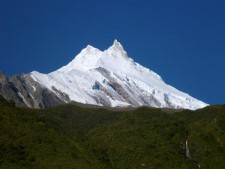
Manaslu
Similar to Cho Oyu, Manaslu is regarded as attainable and in recent years has seen a dramatic increase in traffic. Seven Summits Treks, the now dominate Nepali owned and based guide service, posted they have 130 members and Sherpas for the 2016 season. This is astounding in that in the year ever, 2011, Manaslu saw 140 total summits. Since 1956, Manaslu has had 980 total summits.
UPDATE: The large Seven Summits Treks team is already on their final acclimatization rotation aiming to spend nights at Camps 1, 2 and 3 before returning to base camp for the usual late September weather window. According to Russell Brice, Seven Summits are fixing the ropes this year instead of Himalayan Experience and Altitude Junkies (who is on Dhaulagiri this year) who has performed the task in previous years.
Russel Brice, Himalayan Experience reports heavy rain continues at base camp but a lack of deep snow on Manaslu is allowing for faster progress than in previous years. Also the Benegas Brothers is leading an expedition on Manaslu this year. They posted this update on Facebook along with a great picture from the trek in:
Great news in from the Manaslu region! The team have reached SamaGoan, last village before Base Camp and also one of the largest villages in the whole Manaslu region, despite its small size. The team have had a fascinating last few days on the trail up and up to SamaGoan, which involved crossing the Larke Pass at a soaring 5,105 meters. Weather and visibility was very poor in places, and wet, challenging for some especially as it’s been hard to dry things out! But finally the sun is out in SamaGoan, and the team have done really well, spirits are high and things are getting dry!
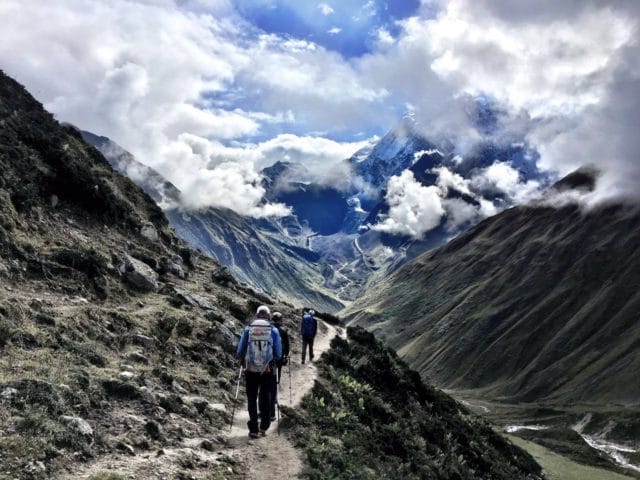
Dhaulagiri
From early repots Altitude Junkies reamins the only team on this 8000er this autumn season. At 26,794’/8167m, Dhaulagiri was considered to be a hard peak to climb but nowadays is considered as in the lower half of the 8000er list. The normal route has some short technical sections and some avalanche danger, but overall it’s a quite straight forward climb. 469 climbers have reached the summit thru 2014.
UPDATE: Phil Crampton reports in that conditions are good and their acclimatization schedule set now
It was the first clear day today. We have had 2 days of rain. The team will climb to Camp 1 on Saturday. Then, on Sunday, climb to Camp 2. We are hoping to be able to summit around the 25th or 26th of September, depending on wind speeds and weather.
Our Sherpas will be fixing ropes on Saturday from Camp 2 – 3, and hopefully on Sunday up to the summit. Despite the rain, there has been no snow above base camp but some rain. The conditions on the mountain are still quite dry.
Shishapangma
Shish is the world’s lowest 8000 meter peak at 8027 meters or 26,335 feet. It is also the only 8000er totally within Tibet. A bit of triva, while we think of these big peaks being in Pakistan, Tibet or Nepal, most of them are on boarders with two countries. The country in italic represents which side that hosts the ‘normal’ route.
- Everest: Nepal/Tibet
- K2: Pakistan/China
- Kangchenjunga: Nepal/India
- Lhotse: Nepal/Tibet
- Makalu: Nepal/Tibet
- Cho Oyu: Nepal/Tibet
- Dhaulagiri: Nepal
- Manaslu: Nepal
- Nanga Parbat: Pakistan
- Annapurna: Nepal
- Gasherbrum I: Pakistan/China
- Broad Peak: Pakistan/China
- Gasherbrum II: Pakistan/China
- Shishapangma: Tibet
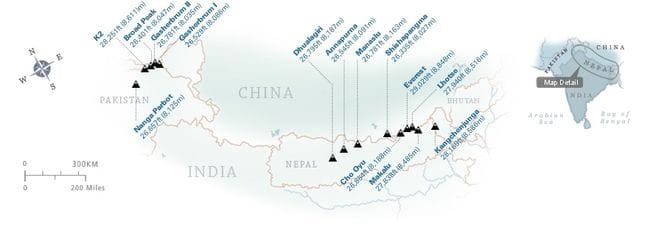
In any event, RMI has a team on Shisha this season and reports arriving at base camp (which you can drive to similar to Everest North) a few days ago and have established their base camp a few hours hike from there:
We’re on the move to Camp 1, spending the night at Depot Camp at the moment. It is hard to describe how small we feel, at the feet of this colossal peak, within a stone throw of its northwest glacier, flanked by huge penitentes of disproportionate dimensions, which we’ll have to cross tomorrow. The winds stopped shortly after dinner, and the plumes from the summit disappeared, allowing us to get a glimpse of the top, right before we crawled into our sleeping bags.
Two of our Sherpa just came by, descending from setting up Camp 1 and reporting good snow conditions, while the other three will remain there for the night, hoping to reach Camp 2 tomorrow while we climb to Camp 1. The plan is to all sleep together at 1, and descend to Base Camp the following day
Everest
There are no reported teams attempting Everest from Nepal this second half of 2016 but two climbers are on the north side.

Kilian Jornet
As I previously reported, Spanish speed climber Kilian Jornet wanted to set a speed record by climbing from the Rongbuk Monastery (Tibet) to the summit in a single push but has now canceled this year’s attempt. He implies he will try again.
UPDATE: His home team posted this update today 15 September 2016:
Kilian Jornet returns from Everest without having climbed the world’s highest mountain. Bad weather conditions during the final stage of the expedition have forced him to abandon the attempt to climb Everest via the north face.
As Jornet explained: “During the first few weeks we were acclimatising well and the conditions were good. However, when we were getting ready to prepare the attempt the weather began to change. There were some heavy snow storms and a large accumulation of snow. As a result, although we were in good physical shape, there was a high risk of avalanches and in the absence of good safety conditions it was impossible to climb.”
In spite of not being able to complete the challenge, Jornet was happy with the experience. “There’s a sense of frustration because we’re well acclimatised and we feel good but it would have exposed us to too much risk. Nevertheless, we’re happy because it’s been a very positive experience in which we’ve learnt a lot. Being alone on Everest is incredible as there was no one else there. Now we’ll go home to recover and plan the future. I think that if we come back there are some things we would change but it’s been a great experience and a good lesson for next time.”
So, having spent three weeks at base camp on the north face of Everest (6,000m) acclimatising and preparing for the challenge of climbing the world’s highest mountain, Jornet and the Summits of My Life team postponed the the Everest challenge until a later date.
With this challenge, Kilian Jornet intended to complete the Summits of My Life project in which since 2012 he has broken records for the ascent and descent of mountains around the world.
Best of luck to him as he considers his next attempt, probably in spring 2017.
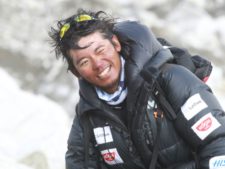
Nobukazu Kuriki
As I posted a few weeks ago, Japanese climber, Nobukazu Kuriki, is climbing from the north side. He is now at base camp but notes deep snow on the north side of Everest.
This is his sixth autumn (post-monsoon), no O’s, climbing alone, attempt on Everest. His previous efforts have been met with drama and injury. He has lost nine fingers on Everest in 2012 during a thwarted attempt on the West Ridge of Everest. In 2015, he reached a bit above the South Col before deep snow forced him to stop.
Update: He posted today 15 September 2016:
Today is 7000 meters above sea level in the adaptation to climb on the wall to ?ri?ki, but I did get a slight fever, I did. This is not possible, in the back. Body spo2(, her oxygen saturation) is near 90, adaptation is well enough now, sushi, oxygen free in? I can! Advanced Base back in better shape, and getting up again I think. This is white with snow. Early anyway, down to eat something hot I think I will.
No updates from Oscar Cadiach is attempting Broad Peak or from Sung-Taek Hong and his Korean team over on Lhotse’s South Face.
Best of luck to all this autumn season.
Climb On!
Alan
Memories are Everything

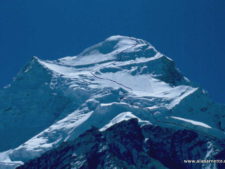


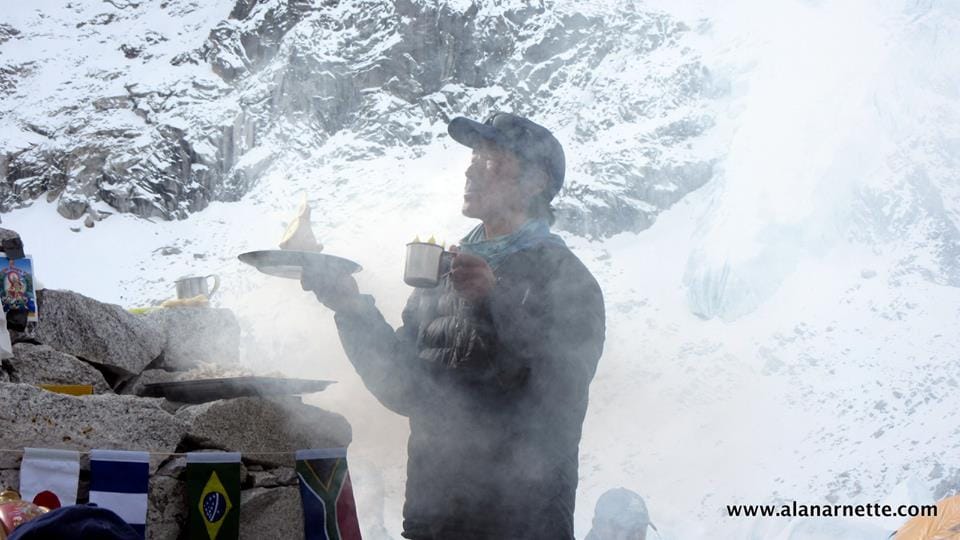
5 thoughts on “autumn Himalayan Climbing Update 2 – Jornet Cancels Everest”
Climbing Cho Oyu in 2 weeks is definitely possible. I climbed it without supplemental oxygen in 2 weeks and 3 days from the US, and 2 weeks from Kathmandu last May.
Yeah, but you are beast! 🙂 Congrats on getting both Cho and Everest back to back with no Os. Well done!!
Thanks man! It’s because we share basically the same hometown:) (Masonville (Eden Valley Farm) for me).
Thanks a lot for the summary, it is very detailed.
Only one small comment, I found it a bit strange that you wrote “dangerous” in brackets when it comes to referencing Kilian Jornet’s words. It also seems a bit odd to add a quote that Everest “would be a bit of a walk in the park” when Everest is a different kind of monster if you are missing fixed ropes, you have no sherpas to rescue you and you try to climb it though the Norton/Hornbein colouir.
The “walk in the park” comment came from Elia not Kilian. Elia is not attempting Everest via the north side, but rather different peaks all together. I quoted Kilian’s dangerous comment to give clarity as to his reasoning for canceling his effort. Thanks Arnold
Comments are closed.